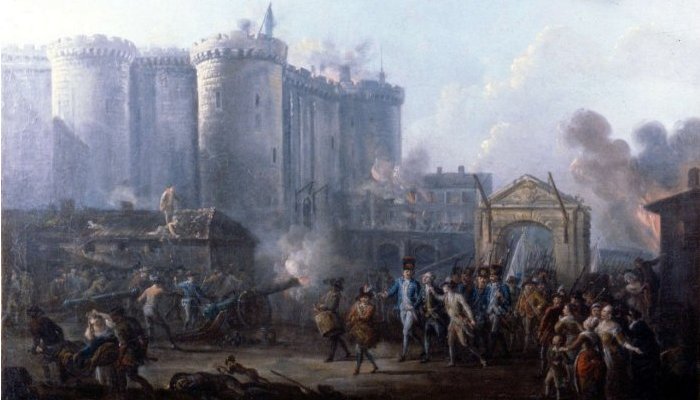AncientPages.com - On July 14th, 1789, Parisian revolutionaries and mutinous troops attacked the Paris fortress-prison Bastille.
The Bastille, a royal fortress that symbolized the tyranny of the Bourbon monarchs, was dismantled.
The Storming of the Bastille and the Arrestation of Governor de Launay. Jean-Baptiste Lallemand - Museum of the French Revolution - Public Domain
This historical event symbolically marked the beginning of the French Revolution, a dramatic period in the history of France when thousands of people, including the King and his wife Marie Antoinette, were executed.
A pretty small prison, the Bastille was initially used as a state prison in the 17th century for political troublemakers, spies, and specific upper-class individuals. Most prisoners were imprisoned without a trial under the King's direct orders.
The Bastille was built in 1370 as a fortification to protect the walled city of Paris from English attacks. It was an impressive, 100 feet tall structure surrounded by a moat, approximately 80 feet wide.
The situation in France, caused by the country's political crisis, began to be extremely unstable. During the reign of Louis XVI, France also faced a significant economic crisis, partially initiated by the cost of intervening in the American Revolution and taxation problems. Although obliged to admit their defeat, Louis XVI and his entourage didn't approve of the new Assembly.
The Bastille of Paris before the Revolution. - Own work Jérôme BLUM - Public Domain.
On July 12th, 1789, the King dismissed his very popular Minister of Finances, Jacques Necker. On July 13th, 1789, a rumor spread in the city's streets of a coming counter-attack by the King's army to 'destabilize' the newly proclaimed parliamentarians.
On the morning of July 14th, 1789, a group formed of artisans and salespeople decided to fight back and ran to the Invalides to steal some weapons. The mob managed to steal 28,000 riffles, but no powder was found there. The Parisians knew that a pile of powder was stocked in the Bastille, a prison symbolizing the King's absolute and arbitrary power. So they decided to attack it.
At the time of the storming, the Bastille was only guarded by 80 "Invalides," veteran soldiers wounded in the field, and about 30 grenadiers from the Swiss mercenary regiments. Marquis Bernard-Rene de Launay was the governor of the "Invalides." The Marquis de Launay, fearing growing anger among the revolutionaries, agreed to meet some of their representatives inside the prison. He expected a rescue team to arrive shortly and help him secure his castle.
But the negotiations ended when a group of revolutionaries entered the Bastille. The guards were ordered to fire, killing hundreds of people.
The path of the revolt completely changed when the rescue team showed up and decided not to fight against but with the mob. With their canons and professional soldier skills, they brought victory to the people of France against Louis XVI's guards in a few hours.
Marquis de Launay surrendered and let the people enter the Bastille. The guards were killed, and the Marquis de Launay was beheaded, with his head put on a stake and carried all over the city as a sign of victory.
As many as 800 men began to destroy the Bastille.
AncientPages.com
